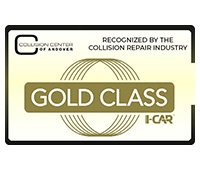Tips on How to Prevent and Survive a Vehicle Rollover
The scenario is all too familiar. You’re driving along enjoying the scenery and you begin to list a little toward the right side of the road. Your tire suddenly clips some debris, and you feel the steeling wheel jerk. You panic as you think you are about to have a collision and you attempt to steer fast to the left until you realize there’s an oncoming car so you quickly steer to the right again. And then, you flip your car. You could end up in the hospital and your vehicle will have to be repaired at an auto body shop. Think about the damage to your body, your car, and your wallet.
It’s all too easy, no matter how fast you are driving, to cause your car to roll over. While taller, more narrow vehicles such as pickup trucks, vans and SUVs are considered more likely to roll because of a higher center of gravity and their top-heavy stature, given the right conditions, any vehicle can roll over. How you prepare yourself and how you learn to maneuver in such an emergency, however, can greatly influence a positive outcome.
What may cause a vehicle rollover:
- When a vehicle rounds a sudden curve, the gravity shifts greatly to one side which has a substantial effect on the vehicle’s balance, ultimately leading in a rollover
- When a driver makes too sharp a turn one way and panics and overcorrects, a pendulum effect is created and the vehicle can roll over.
Avoiding and surviving rollovers:
- Wear your safety belt so you are not ejected from the vehicle during a rollover crash. About 50 percent of rollover fatalities happen when a person is thrown from a vehicle and approximately 75 percent ejected die as a result.
- Ensure your tires are in excellent shape and are properly inflated according to manufacturer’s specifications. This will help prevent blowout and loss of control.
- Avoid overloading your vehicle as it decreases its stability. Never place the heaviest load on the roof as this changes the balance, and in the event of a sharp turn, you are more likely to flip the vehicle.
- Keep your eye on the speedometer because speed can affect your vehicle’s tendency to roll over.
- Remain extra vigilant when driving on rural roads as nearly 75 percent of fatal rollovers are said to occur on undivided, two-way roads or divided roads with no barriers where the speed limit is 55 mph or above.
- Don’t panic! A substantial number of rollovers needlessly occur when drivers overcorrect their steering in an emergency and lose control.
- Since vehicle manufacturers have worked diligently over the years on improving vehicle stability, performance and safety systems, vehicle and body shop experts agree newer vehicles are most often better when it comes to preventing and surviving a roll over.
What to do during loss of vehicle control?
While the government has not yet created standards that involve vehicle rollover prevention, there are vehicle performance standards to help protect occupants in the event of such an emergency.
With revised roof-crush rules and the advancements in computerized technology such as electronic stability program (ESP) or dynamic stability control (DSC), it is estimated a substantial number of rollovers occur as the result of general loss of control. When you panic during an emergency situation, you are more likely to overcorrect steering which can cause you to lose control. When a vehicle begins to slide sideways due to a sharp turn, it will most likely roll over. Most experts agree, if your vehicle begins to leave the roadway, it is best to reduce your speed until it is safe to re enter the roadway.
If you need any work done or existing damage repaired by a trusted body shop that serves Andover and Wichita, KS areas, contact the Collision Center of Andover at (316) 733-9310, and we will get you back on the road.





